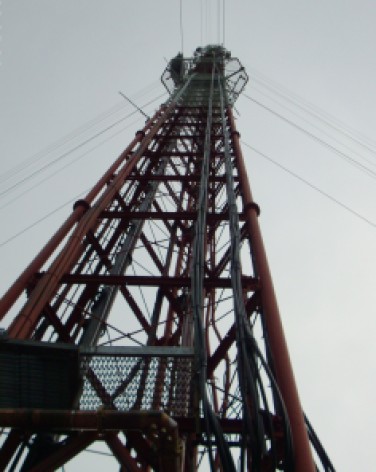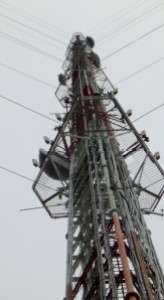Podcast: Play in new window | Download | Embed
Subscribe: Apple Podcasts | RSS
Hey guys,
First off, we had another fallen worker this month and I would like all of you to take a moment of silence in remembrance.
Well it’s time for the world cup!Soccer is exciting to the world! In North America and Australia we both say soccer, but to the rest of the world it’s football. Either way Let’s see how we stack up against each other in tower safety. I got some information on the high risk work certifications that Australia has from Dennis Lundin. I met Dennis on LinkedIn. He was nice enough to send me a boatload of information over. Thank you Dennis!
Leave me a review in iTunes here.
Here in the USA we have a high number of accidents that result in death. I often wanted to compare it to other countries where the government regulates the tower business. Here in the USA we are more or less self-regulated. We rely on the industry to regulate itself. I know you have businesses out there that say they keep an eye on it, but how? They really just give guidelines and they rely on OSHA to follow-up. Are we being proactive in accident prevention?
Now that OSHA is coming out with updated rules I thought it would be interesting to see what Australia does. I virtually met Dennis Lundin on LinkedIn. He was nice enough to send all this information on how it works down under. Here is what he sent me. It covers more than tower climbing, it cover construction in general. It covers risk management.
So what is the USA doing wrong? I really don’t know except maybe we have more work or maybe the lack of safety regulation is hurting the climber’s safety. Don’t you wonder why we don’t have more regulation for an occupation where the percentage of death is so high? Is it that government doesn’t care about the workers that make their communications system work? Here is a critical cog in the machine and the accidents seem to be accepted, not prevented. Is it because when it happens it is out at a tower site, not close to the public? I don’t understand. What is an allowable death rate? I think ZERO is the only answer.
We have similar documentation here in the US. We should know better. So what is happening here? If you look at http://www.wirelessestimator.com/t_content.cfm?pagename=International%20Tower%20Climber%20Deaths you will see that deaths overseas appear to be lower than here in the US.
Dennis was kind enough to take the time to put all of this together so we can understand what they are doing there. They seem to have a better track record that we do.
From Dennis:
By Law, to work in Towers or on Roof Tops, etc a worker must have:
- License To Perform High Risk Work (renewed every 5 Years)
- Dogging – DG
- Basic Rigging – RB
- Intermediate Rigging – RI
- Advanced Rigging – RA
- Certification To Perform High Risk Work (renewed every 3 Years)
- WHS Card
- Working at Heights
- Working on Roofs
- Tower Climbing
- Tower Rescue
- Senior First Aid with CPR
- RF Awareness
License To Perform High Risk Work
http://www.workcover.nsw.gov.au/licensing/Licencesandcertificates/highriskworklicences/Pages/default.aspx
http://www.workcover.nsw.gov.au/licensing/Licencesandcertificates/Pages/Scaffoldingrigginganddogging.aspx
http://www.workcover.nsw.gov.au/NEWLEGISLATION2012/Pages/default.aspx
http://www.workcover.nsw.gov.au/formspublications/publications/Pages/factsheetfallfromheights.aspx
http://www.workcover.nsw.gov.au/formspublications/publications/Pages/WC01321_SafeWorkingatHeightsGuide.aspx
Certification To Perform High Risk Work
https://www.eduweb.vic.gov.au/edulibrary/public/ohs/DEE_EHU-08-1-1_Working_at_Height_Procedure.pdf
Permit To Perform High Risk Work on Buildings (Roof Tops, Platforms,etc) (renewed for every job)
A Work at Heights Permit and Induction Certification from the Building Owner and a Safe Work Method Statement (SWMS) which need to be Fill-Out and signed each day by the Site Supervisor and all Riggers.
Access To Perform High Risk Work on Towers (renewed for every job)
Access Permit and Induction Certification from the Tower Owner (which need to see all above Licence To Perform High Risk Work and Certification To Perform High Risk Work) and a Safe Work Method Statement (SWMS) which need to be Fill-Out and signed each day by the Site Supervisor and all Riggers.
Induction Certification (renewed every 2 Years)
Tower Owner or Building Owner will typical use a company like Rapidinduct to set up and run the Induction services. All above Licence To Perform High Risk Work and Certification To Perform High Risk Work) and a Safe Work Method Statement (SWMS) need to be uploaded to the system and approved before Induction can be permitted.
See Sample of Induction Site
https://www.rapidinduct.com.au
https://www.rapidinduct.com.au/online-induction-solutions.html
https://www.rapidinduct.com.au/contractor_Induction.html
Also a Method Of Procedure (MOP) must be in place in the SWMS
Per Dennis: As I install Microwave Links, my MOP is below Step by Step Tower Installation Procedure ;
- Access site and logon as per Tower/Building Owner and Vertel instructions
- Complete daily SWMS highlighting any apparent hazards and complete toolbox talk
- Confirm drawings are correct cross check with RF design plan
- Unpack Dish and assemble as per manufacturer’s instructions that are supplied with the Dish
- Assemble Dish Mount as per supplied drawings
- Unpack and complete visual inspection of rigging and harness equipment
- Check RadMan for operation and calibration
- Call in outage (if any) with Tower Owner, confirm with either on site technician or NOC that power has been reduced
- Set up block and tackle 2 meters above the intended Dish Mount position, employ 100% attachment techniques whilst accessing tower to install block and tackle, use only tower ladder to access tower
- Use only a block with inbuilt braking system and ensure block and tackle is suitably rated for the task at hand
- Approach red zone of tower with caution monitoring RadMan for RF activity
- Hand haul Dish Mount into position keeping clear of existing equipment
- Attach and secure Dish Mount as per supplied drawings
- Hand haul Dish and ODU into position and secure as per manufacturers instructions
- Pre-terminate Connector to Feeder on ground and hand haul into position, connect to ODU and seal connection in approved manner
- Secure Feeder to Tower Feeder Brackets with appropriate Cable Tries or Cable Hangers that suit the Feeder being used
- Install Earthing (Ground) Kits to Feeder as per manufacturer’s instructions
- Route the Feeder into the Cabinet or Hut via the gland plate and appropriate size gland and terminate as per the manufacturer’s instructions at the IDU mounting location
- Power up equipment and align Dish as per manufacturer’s instructions and Vertel MLT
- Once tower work is complete contact NOC to close outage (if any)
- Clean up site and remove all rubbish, log off site and ensure compound is secure.
So who wins? Let me know what you think, get me on Facebook (hit Like while you are there!)or leave a comment. The way I see it is Australia gets an A while the USA gets a D because we still have so many fatalities. D is very poor, but look at our track record. We have so many people who try to make the USA #1 in training and prevention but we are dropping the ball when it comes to responsibility within the companies. Safety is the priority and schedule should be a distant 3rd after safety budget. Let’s make the rest of the year safe and healthy and no more injuries! At least no more preventable injuries.
Also, still have my books for sale at Wireless Field Aid and An Introduction to Tower Climbing.
I have some good stuff coming up for you faithful followers. I am working on an interview with the FCC people on RF radiation, more tick talk, and some small cell deployment problems.













